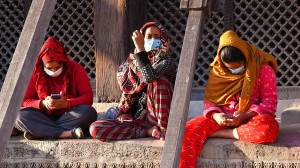Columns
Implications of Dalai Lama's reincarnation
It will shape Tibet’s future, the India-China equation and the global discourse on religious freedom.
Portia B Conrad
The succession of the 14th Dalai Lama has deep spiritual, political and geopolitical implications. As the foremost spiritual leader of Tibetan Buddhism and a historically political figure, the 14th Dalai Lama (Tenzin Gyatso) remains central to the Tibetan struggle for identity and autonomy. With his advancing age, questions about his reincarnation are becoming urgent, influencing not only Tibetans but also India, China and other Buddhist regions.
Traditionally, the Dalai Lama is regarded as the reincarnation of Avalokiteśvara, the Bodhisattva of Compassion. The 14th Dalai Lama was recognised at the age of two through a traditional search and identification process. Today, however, the political landscape has changed dramatically. Since China’s control over Tibet, Beijing insists on having the final say in approving all reincarnations of senior Tibetan lamas. China codified this in law and reinforced it in its 2021 white paper marking 70 years of its Tibet annexation.
The Dalai Lama has countered Beijing’s claim by asserting that his reincarnation will not be found within Chinese-controlled Tibet unless genuine autonomy is restored. He has even floated unconventional possibilities: That his successor could be chosen while he is alive (emanation), could be a woman, multiple reincarnations, or that the process could be democratised by consulting the Tibetan people.
There are three methods recognised for selecting the 15th Dalai Lama. First, a search party consisting of senior monks searches for reincarnation after the 14th Dalai Lama’s passing. Second, the 14th Dalai Lama himself names his successor during his lifetime—emanation (ma-dhey Tulku). Third is the Golden Urn method, where the names for a new Dalai Lama are drawn by lot, a historical practice used but surrounded by controversies due to its politicisation.
These possibilities are under intense scrutiny because the stakes go beyond religion. For Tibetans, the next Dalai Lama symbolises the continuity of their national identity and resistance against Beijing’s control. If China appoints its own Dalai Lama inside Tibet while the Tibetan exile community recognises a different successor abroad, the world may witness competing claimants, echoing the controversy around the Panchen Lama. China’s installation of its own Panchen Lama is still widely rejected by Tibetans, who revere the candidate identified by the 14th Dalai Lama instead.
Beijing’s insistence on controlling reincarnation reflects a contradiction: An officially atheist state claiming authority over a deeply religious tradition. This puts China in a defensive position, arguing for a system it denounces as feudal and irrational while Tibetans in exile have moved towards a democratic governance model through the Central Tibetan Administration (CTA).
China fears that a Dalai Lama chosen independently by Tibetans in exile could embolden separatist sentiments, threaten its territorial hold and inspire greater international solidarity for Tibet’s autonomy. Historically, Tibet has been a friction point in India-China relations. The 14th Dalai Lama’s flight to India in 1959 established a large Tibetan exile community in India, numbering nearly 100,000 today. India’s formal position recognises Tibet as part of China, but public and political sympathy for the Tibetan cause runs deep, rooted in shared cultural and spiritual bonds.
This delicate balance shapes India’s Tibet policy. New Delhi hosts the Dalai Lama and the CTA but usually avoids overt provocations that might escalate tensions with Beijing. However, subtle shifts are visible occasionally, depending on the wavering dynamics in relations between the two countries. For example, Prime Minister Narendra Modi’s public birthday greeting to the Dalai Lama and the recent statement by Cabinet minister Kiren Rijiju, a Buddhist from Arunachal Pradesh, affirming that only the current Dalai Lama and Tibetan traditions can determine his reincarnation directly counter China’s claim of authority.
Similarly, Xi Jinping’s Tibet policy reaffirms Beijing’s three core demands: Tibet is inseparable from China, calls for independence must cease, and the Dalai Lama must halt separatist activities. Yet, the Dalai Lama’s efforts to define his succession process challenge these demands and put Beijing’s strategy to the test. Visible interference by China in the reincarnation could fuel unrest in Tibet and undermine its credibility globally.
The reincarnation question is thus part of a wider ideological battle: Spiritual authority versus state control, freedom of belief versus authoritarian materialism and Tibetan identity versus Chinese assimilation. The 15th Dalai Lama’s legitimacy will likely remain contested, mirroring this larger ideological clash.
For India, Tibet’s significance has grown beyond moral support. India’s Buddhist heritage and role as host to the Tibetan diaspora strengthen its soft power and regional influence. With over 200 monasteries and thousands of monks, India positions itself as a custodian of Buddhist thought. This spiritual link can serve as a quiet yet potent counterweight to China’s efforts to dominate Buddhism in Asia.
India must tread carefully with its Tibet policy amid heightened border tensions with China. Tibet is now intertwined with India’s broader strategic interests—from border stability to cultural diplomacy. Unlike Taiwan, Tibet’s position in India’s geopolitical calculus is uniquely shaped by centuries-old civilisational ties and the living presence of the Dalai Lama.
Globally, the Dalai Lama’s reincarnation resonates far beyond Tibet and India. Mongolia, Japan, Taiwan, the US, the EU and ASEAN states share concerns about religious freedom and cultural preservation. International Buddhist communities see the Dalai Lama’s succession as vital to the continuity of authentic Tibetan Buddhism.
The recent “Resolution of Heartfelt Gratitude” by Tibetan religious leaders reaffirmed that only the Tibetan people and Buddhist community hold the right to decide the Dalai Lama’s future. This challenges China’s political appropriation of Tibetan Buddhism and underscores a broader transnational commitment to protect cultural and spiritual heritage.
Ultimately, how the reincarnation unfolds will shape not only Tibet’s future but also the India-China equation and the global discourse on religious freedom. India’s choices, balancing engagement with Tibetans while managing its fragile relationship with China, will define the region’s stability and the survival of an ancient spiritual tradition in the face of modern geopolitics.




 10.12°C Kathmandu
10.12°C Kathmandu
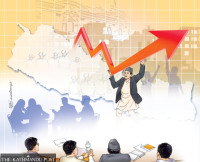
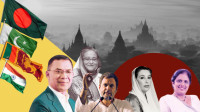





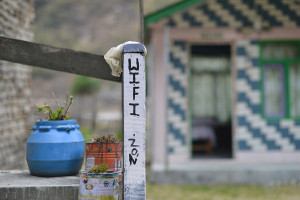

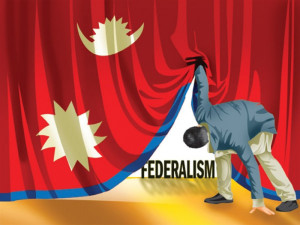



%20(1).jpg&w=300&height=200)

